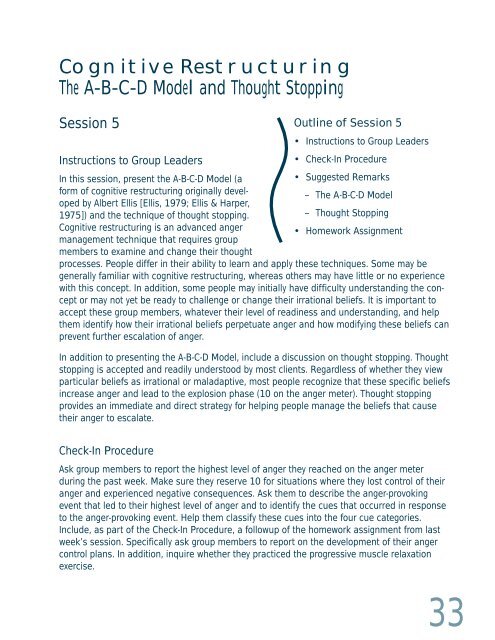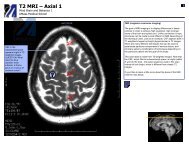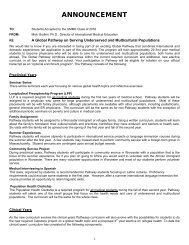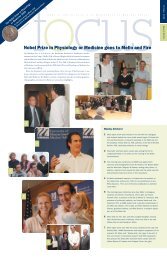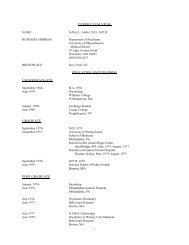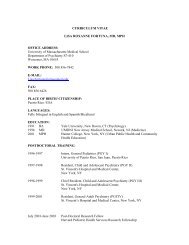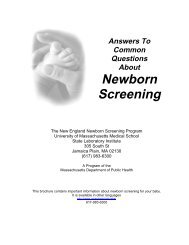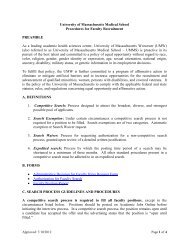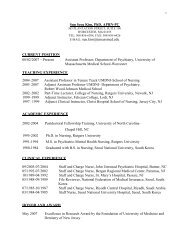Anger Management Manual - the ATTC Network
Anger Management Manual - the ATTC Network
Anger Management Manual - the ATTC Network
You also want an ePaper? Increase the reach of your titles
YUMPU automatically turns print PDFs into web optimized ePapers that Google loves.
Cognitive Restructuring<br />
The A-B-C-D Model and Thought Stopping<br />
Session 5<br />
Instructions to Group Leaders<br />
Outline of Session 5<br />
• Instructions to Group Leaders<br />
• Check-In Procedure<br />
In this session, present <strong>the</strong> A-B-C-D Model (a<br />
• Suggested Remarks<br />
form of cognitive restructuring originally developed<br />
by Albert Ellis [Ellis, 1979; Ellis & Harper,<br />
– The A-B-C-D Model<br />
1975]) and <strong>the</strong> technique of thought stopping.<br />
– Thought Stopping<br />
Cognitive restructuring is an advanced anger<br />
• Homework Assignment<br />
management technique that requires group<br />
members to examine and change <strong>the</strong>ir thought<br />
processes. People differ in <strong>the</strong>ir ability to learn and apply <strong>the</strong>se techniques. Some may be<br />
generally familiar with cognitive restructuring, whereas o<strong>the</strong>rs may have little or no experience<br />
with this concept. In addition, some people may initially have difficulty understanding <strong>the</strong> concept<br />
or may not yet be ready to challenge or change <strong>the</strong>ir irrational beliefs. It is important to<br />
accept <strong>the</strong>se group members, whatever <strong>the</strong>ir level of readiness and understanding, and help<br />
<strong>the</strong>m identify how <strong>the</strong>ir irrational beliefs perpetuate anger and how modifying <strong>the</strong>se beliefs can<br />
prevent fur<strong>the</strong>r escalation of anger.<br />
In addition to presenting <strong>the</strong> A-B-C-D Model, include a discussion on thought stopping. Thought<br />
stopping is accepted and readily understood by most clients. Regardless of whe<strong>the</strong>r <strong>the</strong>y view<br />
particular beliefs as irrational or maladaptive, most people recognize that <strong>the</strong>se specific beliefs<br />
increase anger and lead to <strong>the</strong> explosion phase (10 on <strong>the</strong> anger meter). Thought stopping<br />
provides an immediate and direct strategy for helping people manage <strong>the</strong> beliefs that cause<br />
<strong>the</strong>ir anger to escalate.<br />
Check-In Procedure<br />
Ask group members to report <strong>the</strong> highest level of anger <strong>the</strong>y reached on <strong>the</strong> anger meter<br />
during <strong>the</strong> past week. Make sure <strong>the</strong>y reserve 10 for situations where <strong>the</strong>y lost control of <strong>the</strong>ir<br />
anger and experienced negative consequences. Ask <strong>the</strong>m to describe <strong>the</strong> anger-provoking<br />
event that led to <strong>the</strong>ir highest level of anger and to identify <strong>the</strong> cues that occurred in response<br />
to <strong>the</strong> anger-provoking event. Help <strong>the</strong>m classify <strong>the</strong>se cues into <strong>the</strong> four cue categories.<br />
Include, as part of <strong>the</strong> Check-In Procedure, a followup of <strong>the</strong> homework assignment from last<br />
week’s session. Specifically ask group members to report on <strong>the</strong> development of <strong>the</strong>ir anger<br />
control plans. In addition, inquire whe<strong>the</strong>r <strong>the</strong>y practiced <strong>the</strong> progressive muscle relaxation<br />
exercise.<br />
33


